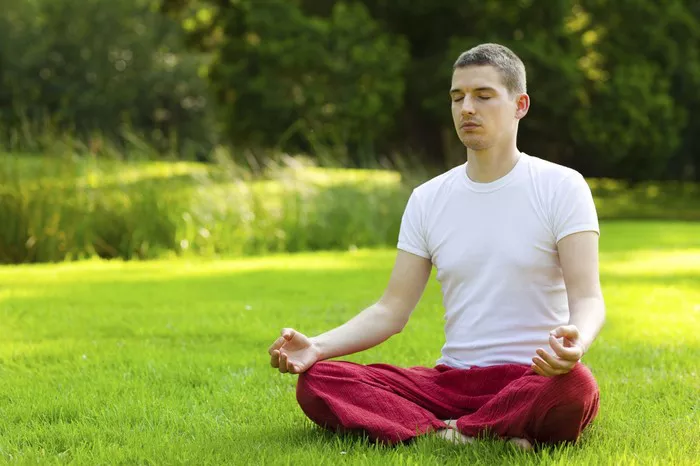Bikram Yoga, developed by Bikram Choudhury, is a dynamic style of yoga practiced in a heated room. This practice not only enhances flexibility and strength but also incorporates the crucial element of pranayama, or breath control. This article will explore the principles of pranayama in Bikram Yoga, the specific techniques involved, their benefits, and how to integrate these practices into your daily routine. By the end, you will have a thorough understanding of how pranayama can elevate your Bikram Yoga practice.
1. Understanding Bikram Yoga
1.1 Origins and Philosophy
Bikram Yoga emerged in the 1970s, influenced by traditional Hatha Yoga. It is characterized by a specific sequence of 26 postures and two breathing exercises, performed in a room heated to approximately 105°F (40°C) with 40% humidity.
1.2 Key Principles of Bikram Yoga
Heat: The heated environment promotes detoxification, increased blood flow, and enhanced flexibility.
Structure: The fixed sequence allows practitioners to develop a deep understanding of each pose over time.
Breath: Pranayama is integrated into the practice, serving as a vital tool for focus and energy management.
2. The Role of Pranayama in Bikram Yoga
2.1 Definition of Pranayama
Pranayama, derived from the Sanskrit words “prana” (life force) and “ayama” (control), refers to techniques that regulate the breath to enhance physical, mental, and spiritual health.
2.2 Importance of Breath in Bikram Yoga
In Bikram Yoga, breath is essential for:
Maintaining focus and concentration.
Enhancing physical performance and endurance.
Calming the mind and reducing stress.
3. Pranayama Techniques in Bikram Yoga
3.1 Pranayama Breathing (First Breathing Exercise)
This foundational breathing exercise is performed at the beginning of each class. It involves deep inhalations and exhalations through the nose, focusing on expanding the diaphragm and maximizing lung capacity. Key aspects include:
Technique: Inhale deeply through the nose, filling the lungs fully; exhale slowly and completely.
Benefits: Improves oxygen intake, calms the nervous system, and prepares the mind for practice.
3.2 Kapalabhati (Skull Shining Breath)
Kapalabhati is introduced as a cleansing technique that involves forceful exhalations and passive inhalations. This practice:
Technique: Forcefully exhale through the nose while drawing the belly in, allowing the inhalation to occur naturally.
Benefits: Energizes the body, enhances mental clarity, and detoxifies the respiratory system.
3.3 Ujjayi Pranayama (Victorious Breath)
Ujjayi breath, characterized by a slight constriction in the throat, produces a soothing sound and helps maintain a steady rhythm throughout the practice. It serves several purposes:
Technique: Inhale deeply through the nose, constricting the throat slightly; exhale with the same control.
Benefits: Calms the mind, regulates heat in the body, and promotes mindfulness.
See also: The Breath of Precision: Exploring Iyengar Yoga Pranayama
4. The Benefits of Pranayama in Bikram Yoga
4.1 Physical Benefits
Improved Lung Capacity: Regular practice of pranayama techniques enhances respiratory function and efficiency.
Increased Energy Levels: Breath control revitalizes the body, combating fatigue and enhancing performance.
Enhanced Flexibility: Proper breathing aids in the deepening of stretches and poses.
4.2 Mental Benefits
Stress Reduction: Pranayama helps manage anxiety and stress levels, promoting a sense of calm.
Enhanced Focus and Concentration: Breath awareness sharpens mental clarity, helping practitioners stay present.
Emotional Balance: Regulating breath can lead to greater emotional stability and resilience.
4.3 Spiritual Benefits
Deeper Meditation: Pranayama prepares the mind for meditation, enhancing spiritual practice.
Connection with the Self: Breath control fosters a deeper connection with one’s inner self.
Transcendence: Regular practice can lead to experiences of transcendence and inner peace.
5. Integrating Pranayama into Your Bikram Practice
5.1 Timing and Sequence
Incorporate pranayama at various stages of your practice:
Before Class: Practice breathing exercises to prepare the body and mind.
During Class: Use pranayama techniques to maintain focus and breath awareness throughout the postures.
After Class: Conclude with calming breath exercises to cool down and transition into relaxation.
5.2 Mindful Breathing Techniques
Focus on the following during practice:
Breath Awareness: Tune into the rhythm of your breath throughout the session.
Synchronizing Breath and Movement: Flow with your breath as you transition between poses.
Creating a Breath-Centric Routine: Prioritize breath in your daily practice, both on and off the mat.
5.3 Common Challenges and Solutions
Difficulty in Breath Control: Start with simpler techniques and gradually progress to more advanced methods.
Distracted Mind: Use visualization or mantra to anchor your focus during practice.
Physical Discomfort: Adjust your postures to accommodate your body and breath, ensuring comfort and ease.
6. Advanced Pranayama Techniques
6.1 Bandhas (Energy Locks)
Learn to incorporate bandhas with pranayama to control energy flow and enhance your practice:
Mula Bandha (Root Lock): Engages the pelvic floor.
Uddiyana Bandha (Abdominal Lock): Draws the abdomen in and up.
Jalandhara Bandha (Chin Lock): Engages the throat area.
6.2 Meditation and Pranayama Integration
Explore the intersection of pranayama and meditation, focusing on techniques that deepen both practices and enhance overall well-being.
7. Personal Experiences and Testimonials
7.1 Student Journeys
Share stories of practitioners who have transformed their practice through pranayama, highlighting individual benefits and insights from their journeys.
7.2 Teacher Perspectives
Gather insights from experienced Bikram teachers on the importance of pranayama and its integration into the practice, emphasizing its role in the overall Bikram experience.
8. Conclusion
Bikram Yoga pranayama is a vital component of the practice, offering a pathway to physical vitality, mental clarity, and spiritual connection. By understanding and incorporating these breath control techniques, practitioners can deepen their yoga journey and experience profound transformations in both body and mind. Whether you are new to Bikram Yoga or a seasoned practitioner, embracing pranayama can enhance your practice and overall well-being.
This outline provides a detailed structure for an article on Bikram Yoga and pranayama. If you need specific sections expanded or additional details, feel free to ask!
Related topics:
Breath of Ashtanga Yoga: Knowing Pranayama for Transformation
























